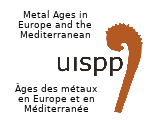The recognition of arsenic as a deliberate alloy is more complex than a simple decision to accept a specific percentage as the place at which recognition of the metallurgical changes implies deliberate actions. Metallurgical characteristics based on alloying are complex, and they are affected by other factors besides additions to the main metal. Analyses of copper products smelted at Chrysokamino, Crete provide a test case where one can examine the metallurgical products from a known production site to determine the range of included arsenic and other impurities. The workshop site at Chrysokamino was active until c. 2000 B.C. It was located in northeast Crete, but it was engaged in smelting copper ores that were imported from sources in the Cyclades. The smelting operation used small bowl furnaces capped by cylindrical chimneys with ventilation holes in their sides utilizing a combination of natural wind enhanced with the use of blowpipes ending in tuyeres. The product was a copper with a variable arsenic content. The inclusion raises the question of whether the arsenic was accidental or a result of using specific arsenic-rich ores.

 PDF version
PDF version
